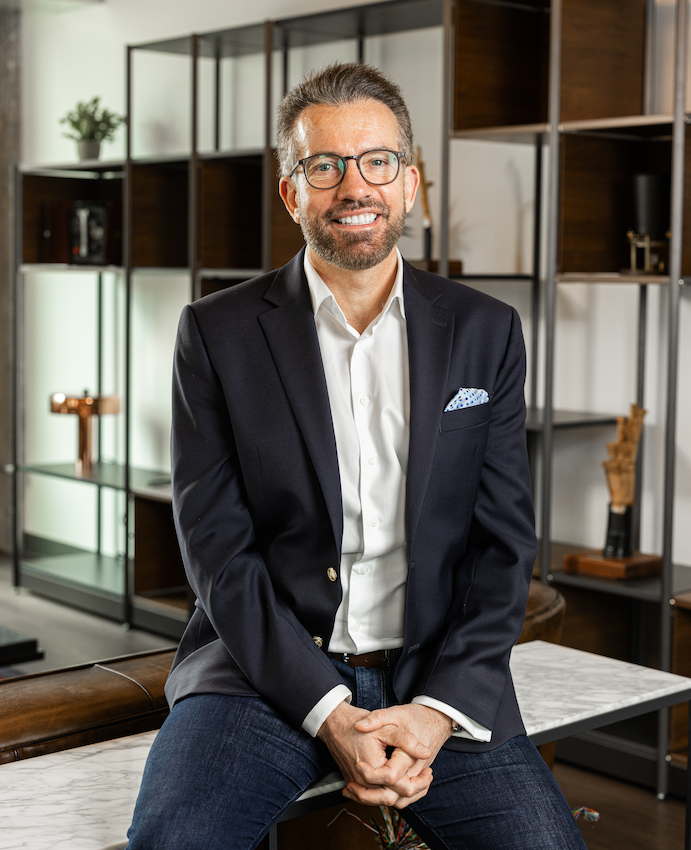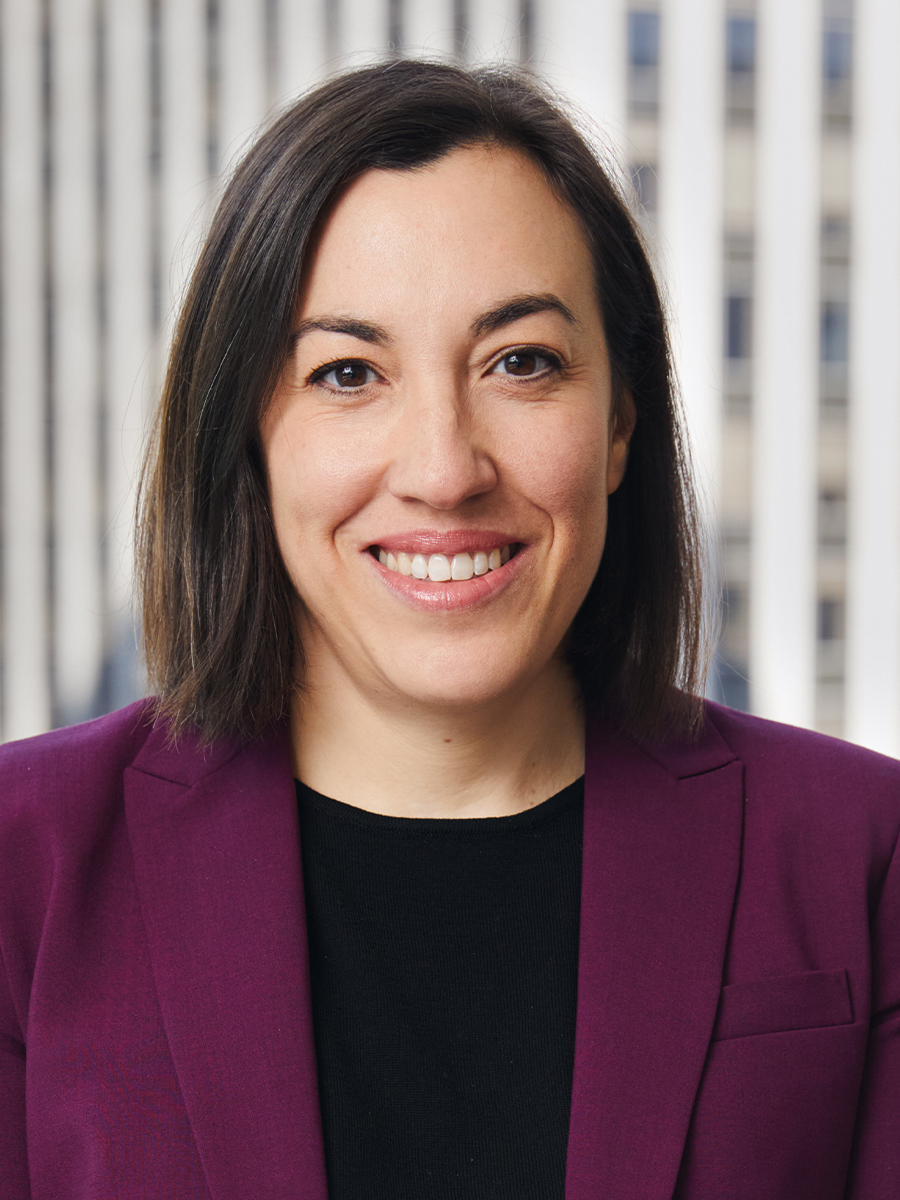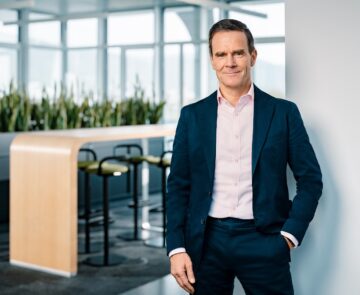After moving to Dallas to take charge of Frontier Communications, Nick Jeffery helped orchestrate his greatest turnaround yet. By Elizabeth Volpe and Cleo Levy.
Less than four years after emerging from bankruptcy, Frontier Communications last fall accepted a $20 billion takeover offer from Verizon, a resounding validation of the turnaround strategy of CEO Nick Jeffery.
Article Summary
Nick Jeffery, CEO of Frontier Communications, has led a dramatic transformation of the company—from bankruptcy to a $20 billion acquisition deal with Verizon. In this Brunswick Review interview, Jeffery reflects on bold leadership, embracing risk, and redefining the telecom’s future through a fiber-first strategy and a focus on operational excellence.
- Rapid turnaround under CEO Nick Jeffery: Since joining Frontier Communications in 2021 and relocating to Dallas, Jeffery led the company from bankruptcy to a remarkable revival within four years.
- “Fiber‑first” strategy: Frontier rebranded itself as the nation’s largest pure‑play fiber internet provider, prioritizing fiber expansion, profitability growth, and elevated customer satisfaction metrics such as Net Promoter Score.
- Major acquisition by Verizon: In late 2024, Frontier accepted a $20 billion takeover offer from Verizon, which remains subject to regulatory approval and is expected to close in Q1 2026.
- Leadership insights: Jeffery discusses key lessons: running toward challenges (not away), managing activist investors, questioning the merits of rebranding during transformation, and advocating telecom as a bright career path for younger professionals.
In the years following Jeffery’s arrival in 2021, Frontier executed a turnaround that was dramatic by the standards of telecom or any industry. Emerging from bankruptcy with a tainted brand and plummeting customer approval ratings, Frontier reinvented itself with a bold fiber-first vision. Today the company is the largest pure-play fiber internet provider in the country, with growing revenues and profits and industry-leading Net Promoter Scores, a crucial measure of customer satisfaction. Verizon’s proposed $20 billion acquisition ranked as the largest in telecom in 2024. The acquisition, subject to regulatory approval, is expected to close in the first quarter of 2026.
In conversation with Jeffery, he offers an informative and at times entertaining account of a spectacular corporate turnaround. He also offers advice on managing activist investors, debates whether rebranding may be overrated as a turnaround strategy and encourages young people to pursue a career in telecom.
Frontier was emerging from bankruptcy just four years ago. How did you and your team pull off such a successful turnaround in such a short time?
When I arrived, Frontier was a broken company and here we are four years later, the largest pure-play fiber internet provider in the country with growing revenue and profitability. We’re now a modern, agile tech company, which is totally thriving.
So, how did we do that? We started with a clear purpose. There’s a lot of fluff out there around purpose. For me, purpose is about giving people a reason beyond a paycheck to rise early, come to work and put in a serious effort. Before I came to Frontier, it had no defined purpose or strategy. People were just doing work.
When I joined Frontier, I brought with me a clear sense of purpose—what we call Building Gigabit America. These three words articulate our ambitious plans to build the digital infrastructure this country needs to thrive. From there you can quite easily see that we’re part of a big national endeavor, like building the freeways or railways. We are building one of the biggest infrastructures this country has ever seen and one that it needs.
Secondly, I outlined a simple four-pillar strategy: build fiber, sell fiber, improve customer service and become more efficient. And we made sure everyone in the company understood their role in it.
And thirdly, I recruited a brilliant new leadership team who could drive the change needed to put the customer back at the center of our universe and empower our people to break down any barrier that got in the way of delivering for our customers.
That was our key to success: a super-clear strategy, a big purpose, well-funded operation, brilliantly executed by a fantastic team that we were able to recruit and keep. We just built a good business, a place where people want to come to work.
“There’s a lot of fluff out there around purpose. For me, purpose is about giving people a reason beyond a paycheck to rise early, come to work and put in a serious effort.”
We talked about strategy and purpose. The third leg is brand. How important is brand in a turnaround?
Brand is crucial—but not in the way most people think. I always say, “a brand is what a brand does,” so it’s less about the logo or color, it’s entirely about the experiences your customers have with you at every interaction from signing up for service to paying your bill.
Let me take you back to my time at Vodafone to answer this one.
After about 10 years at the company, I was offered the role of CEO of the UK business which was struggling—declining performance, disengaged employees and unhappy customers.
I figured out pretty quickly that I wasn’t going to be able to escape this particular job offer. So, I thought, “If you’re going to do it, go all in.” Running towards danger may be a little characteristic of me.
It was an interesting challenge, because I didn’t have the flexibility to change the brand. Vodafone UK was part of Vodafone Group, which then operated in about 50 countries and was a mono-brand, so we had to stick with the brand. But turnarounds aren’t about rebranding and creating the illusion of improvement. It’s about making the company fundamentally better.
The same was true at Frontier. After bankruptcy, customers weren’t asking for a new name—they just wanted us to be a better company.
By focusing relentlessly on customer service, operational excellence and truly compelling customer offers, we turned it around. In just four years, our customer satisfaction—as measured by Net Promoter Score—went from the worst in the industry to the highest.
The takeaway? Fix the experience and the brand perception will follow. Real branding is about the delivery, not the design. Although a cool, modern logo helps.
So, did everything go exactly to plan? What kind of challenges did you run into?
There are no perfect plans and I think every CEO knows that.
It could’ve all gone terribly wrong. We might not have been able to hire the right people, but we put together what I believe is the best team in the business. We might not have been able to raise funds, at the right price, but our CFO made sure that was never a problem. All sorts of operational issues could’ve hit us. Every day we have about 80,000 simultaneous engineering projects going on—it’s just a big, complicated operation.
It can also feel risky to be the first out of the gate. In 2021 when we started our turnaround, we were one of only a few interested in building fiber infrastructure. That helped enable us early on to grab the best talent, the best suppliers and the best contracts.
We ran under the radar for pretty much two years, and then everybody started to come around to the same way of thinking, and now of course fiber is the flavor du jour.
Our team made it look easy, but it wasn’t all plain sailing. There were long hours, setbacks, daily, weekly, monthly issues to solve. For instance, I wouldn’t have bargained on there being a war in Europe, which contributed to already rising interest rates at a time when we were borrowing. We also had some labor issues and supply chain constraints early on that we had to work through.
And let’s not forget the COVID pandemic. We got started in the spring of 2021, right in the middle of it, so everything was being done on Zoom. I was still living in London, and others were scattered across the country. It would be months until our board and new management team would eventually meet each other in person.
You have to like being in the trenches, and I do.

If we can rewind a bit, can you tell us how you ended up in the US running a telecommunications company in bankruptcy?
It was late 2020 during the pandemic lockdown and I was running Vodafone UK from a cottage in the countryside in the north of England when the call came in. It was John Stratton. John, who had a legendary career at Verizon, had just been named Chairman of a recently bankrupt US telephone company called Frontier Communications.
I knew John because Vodafone used to be a 49% minority shareholder in Verizon Wireless and I was occasionally involved in cross Verizon/Vodafone initiatives. So, John rang me up about some private equity project he was working on and asked about my plans. He knew I had been at Vodafone now for more than 16 years and had successfully finished the turnaround of the UK business. He wanted to know if I was content staying put. I told him, “I’d like to get my teeth into something new.”
He said, “Then I’ve got the opportunity for you.”
My initial reaction was skeptical. Here was a company that had the worst reputation, had gone bankrupt and was in what I considered to be a not-very-sexy part of the industry—fixed communications.
On the other hand, there was a huge opportunity in the US market for a fiber player. People clearly wanted faster internet, and fiber runs pretty much at the speed of light—you’re not getting faster than that. At the same time, fiber penetration in the US was really low—about 35%—especially compared to other countries.
And yeah, bankruptcy sounds scary, but the company was coming out of it with a clean balance sheet and low leverage. That meant it actually had the room to invest in building out fiber. So, you had the capital, a favorable market, and a product everyone wants and that can’t really be improved on. I remember thinking, this feels like one of those run-to-danger moments.
It’s partly logic, and it is partly instinct. At some point you just have to back yourself.
I decided to put my hat in the ring and, through a very competitive process, managed to get the job.
You’ve led two massive turnarounds in the past decade. Would you consider yourself a turnaround CEO?
While I wouldn’t label myself that way, I do get energized by the challenge of making businesses better. Turnarounds are just the most intense version of that. Every company has room to improve, whether it’s about growth, innovation or unlocking value in new ways.
Take my time at Vodafone, for example. I launched their business-to-business division from the ground up—now it’s a huge driver of the company. I also founded their Internet of Things business, which has grown to become one of the largest in the world. That kind of transformation—whether it’s building, scaling or turning something around—is what really motivates me.
In the end, it’s not about labels—it’s about impact.
“You have to like being in the trenches, and I do.”
During the turnaround of Frontier, you had engagement from a shareholder activist. From that experience, are there lessons you could share of potential value to other CEOs?
In bankruptcy court, distressed-debt holders took ownership of Frontier. After we relisted on the Nasdaq in 2021, active distressed-debt holders were our largest shareholders. Then as you know very well, we had an activist investor come in as well a few years later.
I would offer the same reflection on all of them: Listen to all of your shareholders very carefully. It’s extremely wise to spend time with them. Respect their opinions. If they don’t agree with each other, if you don’t agree with them, don’t worry about it. Just take all that you’ve heard back to your board and concentrate on what you think is the best way to create long-term shareholder value. In our case, quite a few of the distressed-debt holders looked at what we were doing and thought, “It’s not really our normal investment, but we like what this management team is doing and the results we’re seeing.”
Beyond Verizon’s acquisition of Frontier, there’s been other M&A activity in telecom recently. Do you have a POV on what’s happening?
I’ve witnessed in other markets around the world this thing called “convergence,” where fixed and wireless networks were starting to get bundled together. Wherever you’ve got what I would call an asymmetry of asset ownership—a lot of cellular but no wire line—you want to balance that. Or the inverse: If you’ve got a lot of cable, the temptation is to get cellular through a wholesale deal and bundle it in with cable to protect the value in cable.
About four years ago, when I came to the US, I saw a race beginning to gather the assets they need to put those asymmetries back into some kind of balance. We knew that the cellular guys were very likely to want a lot more fiber.
Wind the clock forward a bit, and sure enough convergence is happening. The race is on, and fiber is a core part of the market. I suspect the patchwork quilt of smaller fiber builders will consolidate. And you’ll certainly see the cellular players buying, and building, a lot more fiber. Frontier was one of the first, but there’s a long line.
“We took one of America’s most broken companies and transformed it into something that really delivers for its customers and that, ultimately, Verizon is willing to pay $20 billion for.”
Did you aspire to a career in telecom when you were just starting out? Should young people and recent graduates consider a career in telecom?
I’ve been working in telecom for 32 years. I don’t think I’ve ever met anybody that got into it on purpose. That said, things have changed quite a bit and this is an industry that’s got a long way to run and is full of excitement. Let me give you a few reasons why I’m saying that.
Firstly, it’s a tech industry. I’ve always said Frontier is a tech-comms company. It’s tech first, comms second. When you see it that way, you start to attract the kind of people who share that view of the world, and your workplace becomes a great place to be.
Secondly, it seems magical that I can pick up a mobile phone and talk to any other human on planet Earth in real time in perfect clarity. And no matter where I am on planet Earth, I can be billed for one second’s worth of use. I run my entire life through it as well: my banking, entertainment, gaming. This is that rare case where reality is better than science fiction. There’s pride in the work of enabling these connections and seeing people, communities and businesses thrive with reliable access to the digital society.
Thirdly, it’s an industry that’s got a long runway ahead. Beyond wireless, think about how we enable innovation by connecting AI and other technologies. Fiber is a critical component to realizing even our short-term ambitions for AI. AI needs computing power, energy (to run the computers) and fiber to deliver the huge amounts of data that AI needs to work and to deliver outcomes to businesses and consumers.
So, whether you’re in sales, engineering, data science, IT, finance, HR or some other field, I think telecom is an amazing market to be in.
As you reflect on what’s next, what are your thoughts about legacy, yours and Frontier’s?
My job now is to deliver this company to Verizon in the best shape it can be. And, boy, are we doing that. We are absolutely firing on all cylinders here.
When the dust settles, I would hope that everyone at Frontier, everyone involved with this amazing transformation, looks back with pride. Deep, deep pride, because we took one of America’s most broken companies and transformed it into something that really delivers for its customers and, ultimately, Verizon is willing to pay $20 billion for.





